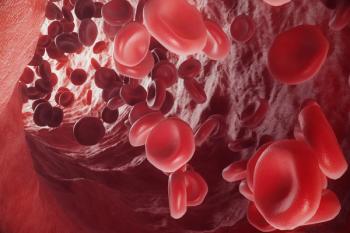
Optimal Treatment for Early-Stage Follicular Lymphoma Still Not Established
The international retrospective study included 365 patients with newly diagnosed early-stage follicular lymphoma rigorously staged with PET-CT and bone marrow biopsy.
The results of a new
The study, published in Blood Advances, looked at several treatment strategies for patients, including watchful waiting, and found that variable practices resulted in similar overall survival outcomes. However, systemic therapy followed by maintenance rituximab (Rituxan) was the most effective, according to Joshua W.D. Tobin, of Princess Alexandra Hospital, Brisbane, Australia, and colleagues.
These data together with the TROG study, which showed that radiation followed by systemic therapy was more effective than radiation alone, “challenge the paradigm that radiotherapy alone is the standard of care,” they wrote in Blood Advances.
The international retrospective study included 365 patients with newly diagnosed early-stage follicular lymphoma rigorously staged with PET-CT and bone marrow biopsy. The study included 221 patients with stage I disease. All patients had undergone treatment from 2005 to 2017 with either watchful waiting (n=85) or active treatment (n=280). Active treatment consisted of radiation alone or systemic therapy. Of patients treated with systemic therapy, 49 received maintenance rituximab.
“Radiation has traditionally been considered the standard of care for early-stage follicular lymphoma based on single-institution or small studies conducted in the CT era and prior to rituximab that demonstrated effective local disease control, with 10-year progression-free survival rates of 40% to 50% in the pre-PET era,” the researchers wrote. “In our study, radiation alone was given to 47% of patients, demonstrating widespread, but not universal, use.”
Both active therapies – with or without maintenance – yielded similar overall response rates. Radiation alone and systemic therapy without maintenance rituximab also yielded similar progression-free survival. However, maintenance rituximab improved progression-free survival (HR=0.24; 95% CI, 0.095-0.64; P = .017). Additionally, incidence of disease transformation was lower with systemic therapy compared with radiation or watchful waiting (HR=0.20; 95% CI, 0.070-0.61; P = .034).
Overall survival was similar between all treatment approaches, including watchful waiting.
“Based on our comparable overall survival between watchful waiting and actively treated patients, watchful waiting could be considered as an initial management strategy in early-stage follicular lymphoma; however, long-term follow-up is required to determine if a survival benefit exists favoring active treatment,” the researchers wrote. “It must be considered that this was not an intention-to-treat analysis, and patients initially managed with watchful waiting but then treated within 6 months would be considered to have received active treatment, leading to immortal time bias.”
Newsletter
Stay up to date on recent advances in the multidisciplinary approach to cancer.
















































































